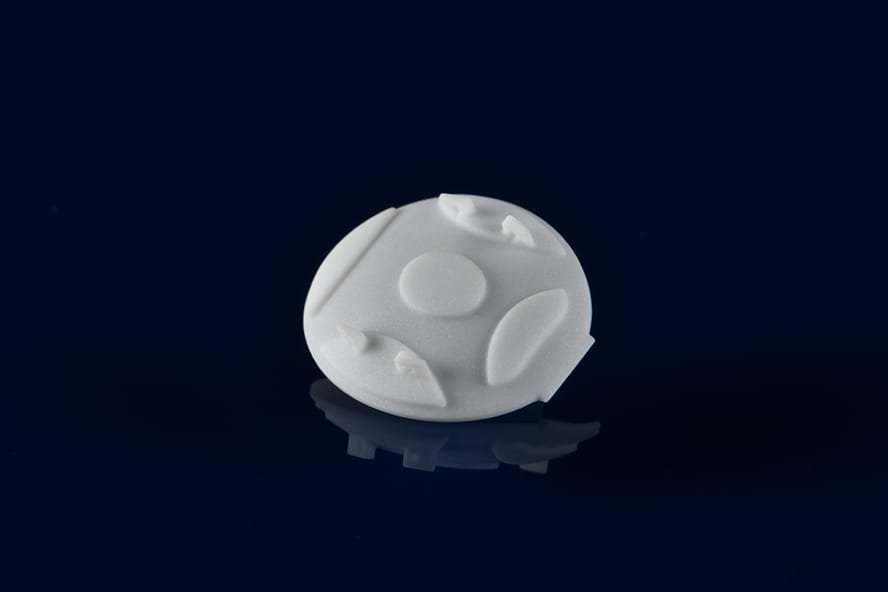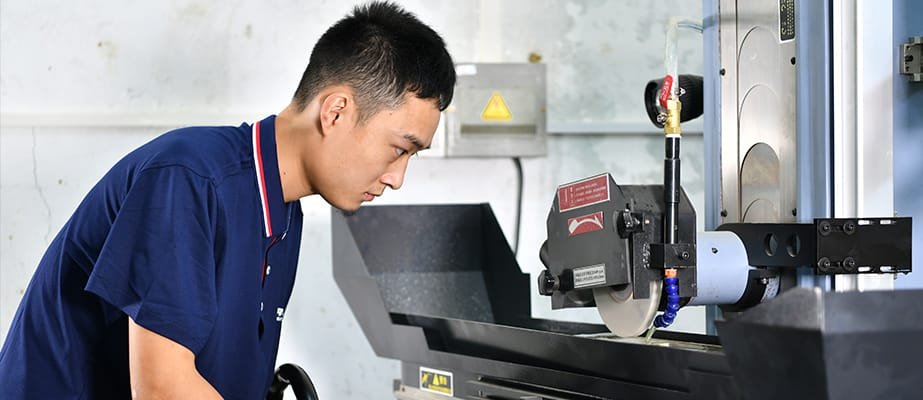可加工玻璃陶瓷概述
通常以康宁的 马科 可切削玻璃陶瓷是一种独特的材料,填补了陶瓷和金属等传统工程材料之间的空白。它的主要特点是可加工性,无需金刚石工具或烧结工艺,即可将其塑造成复杂的几何形状。是什么让这种材料如此具有革命性呢?让我们来详细了解一下它的特性、加工技术和应用。

组成
可切削玻璃陶瓷是一种主要由氟长云母和硼硅玻璃制成的复合材料。其微观结构由玻璃基体中随机定向的云母片网络组成,这使其具有出色的可加工性和热稳定性。这种成分使可加工玻璃陶瓷成为高精度应用中传统陶瓷的替代品。
可加工玻璃陶瓷的主要特性
1.热稳定性
工作温度:可加工玻璃陶瓷可承受的连续使用温度高达 800°C 在空气中和 1000°C 在真空环境中。
热膨胀:其热膨胀系数 (CTE)与大多数金属相似,从而最大限度地减少了组件中的热失配。 典型的 CTE: ~9.3 x 10^-6/K.
2.电气绝缘
优异的介电性能使其成为高压和射频应用的首选。
介电强度:达 40 千伏/毫米.
体积电阻率:大于 10 ^ 14 Ω- cm 室温。
3.良好的加工性能
可使用标准碳化钨或高速钢工具进行加工。
加工后无需烧结或焙烧,从而减少了准备时间和成本。
4.耐化学性
耐大多数酸和溶剂,但不建议长时间接触强碱或氢氟酸。
5.尺寸稳定性
极低的孔隙率和稳定的材料密度确保了即使在热循环条件下也能保持较高的尺寸精度。
如何加工可机械加工的玻璃陶瓷
可加工玻璃陶瓷的设计易于加工,可实现复杂的设计,而无需面对传统陶瓷带来的挑战

1.使用的工具
大多数应用可使用标准高速钢(HSS)或碳化钨工具。
避免使用金刚石涂层工具,因为这种材料的玻璃基质可能会导致过度磨损。
2.Processing Guide
速度和进料:建议使用中速和进料,以避免碎裂。
冷却液:使用水基冷却剂可最大限度地减少热量积聚并防止出现微裂纹。
钻孔:钻孔时,应确保适当的间隙角度,以减少对材料的应力。
螺纹和攻丝:玻璃陶瓷可以用细螺纹加工而不会开裂;但应避免过大的扭矩。
3.组织技术
加工后,可能需要对边缘进行抛光,以去除微裂缝。
使用钻石抛光膏可以达到镜面效果。
4.避免过热
加工过程中的过热会造成局部热应力,导致开裂。在整个加工过程中保持较低的热梯度。
可加工玻璃陶瓷的应用
航空航天与国防
隔热:由于其热稳定性高,可用于隔热板和隔热屏障。
高压绝缘体:其出色的介电性能使其成为卫星和航天器系统中不可或缺的材料。
电子和光学
基底:由于其尺寸稳定性,非常适用于微电子和光电子。
光学元件:用于制造透镜、激光支架和光学准直系统
医疗设备
常用于高精度诊断设备,如 X 光机和 CT 扫描仪。
它的生物相容性使其适用于外科器械和植入物。
工业应用
化学处理:耐酸,是定制实验室容器的首选材料。
真空环境:由于其低排气特性,常用于真空系统。
原型设计
由于可加工玻璃陶瓷无需后续加工,因此被广泛用于陶瓷部件的快速成型。
可加工玻璃陶瓷与传统陶瓷的对比
可加工玻璃陶瓷制造商
Jundro 陶瓷公司 为工业客户提供标准尺寸和定制尺寸。使其成为各种高精密设备(如棒材)的理想选择,如有需要,请联系我们的专家。我们很高兴为您提供服务
关于可加工玻璃陶瓷的常见问题
可加工玻璃陶瓷能否用于真空环境?
是的,由于其低放气性和高达 1000°C 的热稳定性,它在高真空环境中的表现非常出色。
Macor 是目前唯一可加工的玻璃陶瓷吗?
Macor 是最知名的品牌,但其他制造商也生产性能相当的类似材料。
加工过程中使用什么冷却液最好?
水基冷却剂可最大限度地减少热量积聚并防止开裂,因此是理想的冷却剂。
